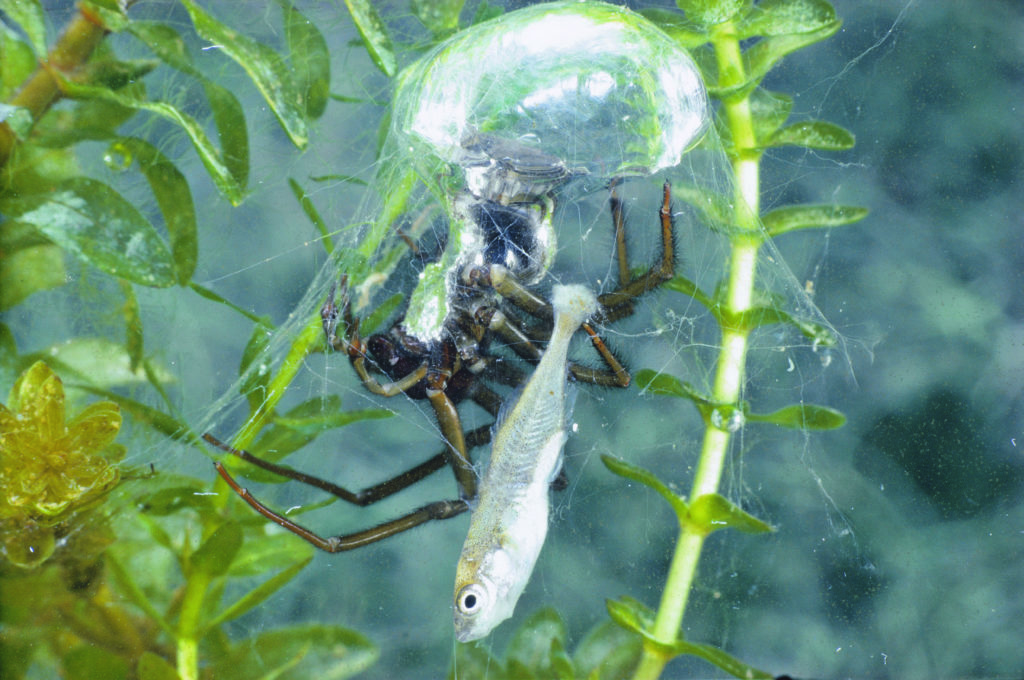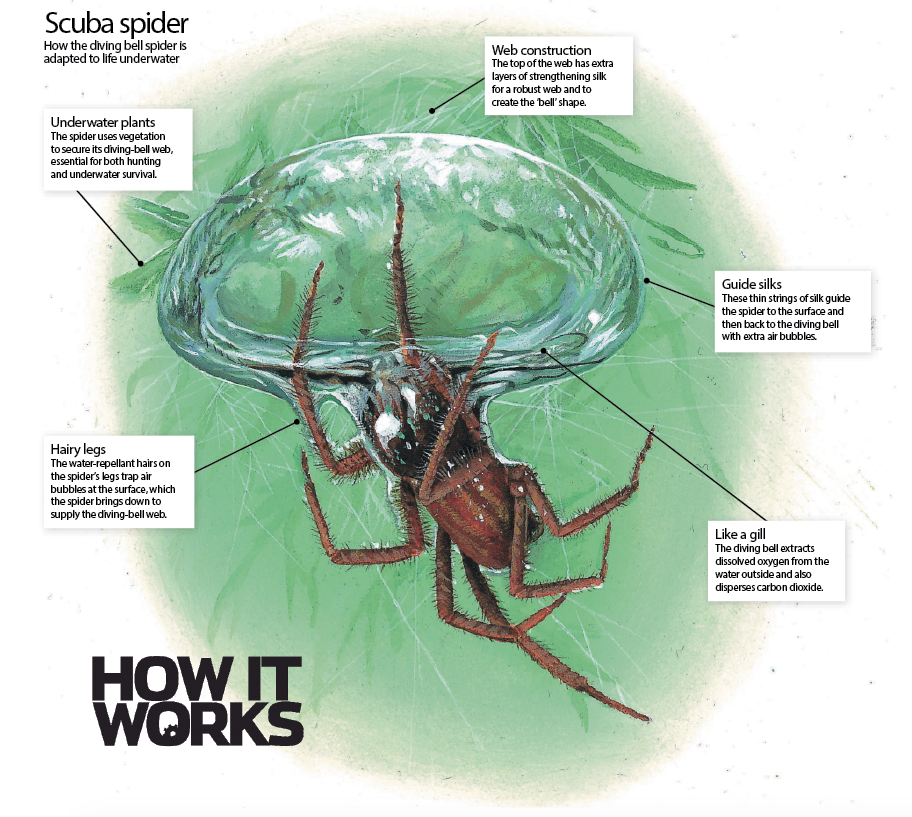Diving Bell Spider
by Ailsa Harvey · 05/09/2019
Check out the ingenious adaptations of these sub-surface arachnids

Just when you thought that the depths of ponds and lakes might be safe from these eight-legged critters, the diving bell spider is here to disturb the peace. A truly incredible adaptation allows this spider to spend the majority of its life underwater.
The water spider species (Argyroneta aquatica) lives in ponds and slow-moving waterways across Europe and northern Asia. It uses its web as a ‘diving bell’ — a principle that was supposedly tested first by none other than Alexander the Great in 332 BCE.
The water spider creates a web underwater, anchoring it to plants to secure it. It then makes several trips to the surface, trapping bubbles of air between the specialised hairs on its legs. The spider then heads back underwater to fill the web with these bubbles.
It was once thought that the spider continually had to supply the web with air, but recent research has shown that once filled, the spider can stay comfortably in the web all day (as long as it’s not highly active). This is because the web functions almost like a fish’s gill. As the spider consumes oxygen, the web draws in more dissolved oxygen from the water surrounding it, as well as dissipating the waste carbon dioxide. Were it not for nitrogen diffusion causing the web to shrink, the spider would be able to stay there indefinitely. Even so, the diving bell allows the spider to hunt, feed, mate and lay eggs while totally submerged.
For more science and technology articles, pick up the latest copy of How It Works from all good retailers or from our website now. If you have a tablet or smartphone, you can also download the digital version onto your iOS or Android device. To make sure you never miss an issue of How It Works magazine, subscribe today!






